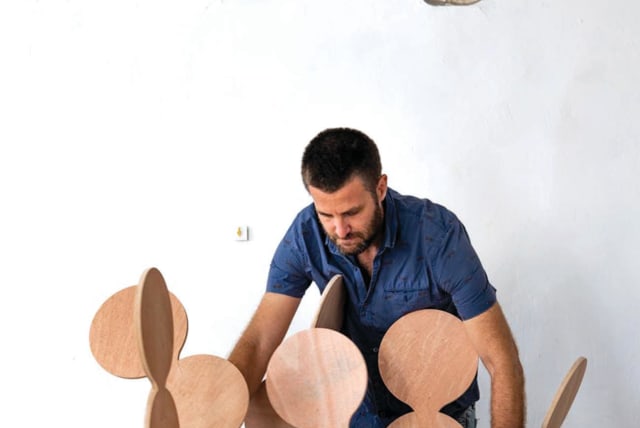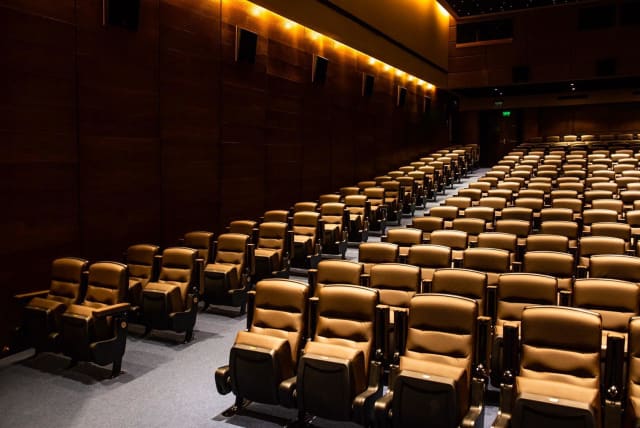An Israeli whose family has Central European roots, Amir Rozei is a multidisciplinary architect and craftsman with flair and vision. After he graduated from the University of Haifa nearly a decade ago, Rozei’s career began auspiciously, as he landed an internship at the famed Studio Libeskind in New York City. For the past six years, Rozei has worked at one of Israel’s leading architectural firms.
Rozei’s Central European roots are attributed to his Romanian-born father, Alexander, who immigrated to Israel with his family in the early 1960s. Even before Romania fell under Nazi control, its authorities already pursued a harsh and persecutory brand of antisemitism, particularly against Jews “living in the eastern borderlands, who were falsely associated with Soviet communism, and those living in Transylvania who were identified with past Hungarian rule,” as cited by the US Holocaust Memorial Museum. In addition, right-wing social-revolutionary movements, such as the fascist Iron Guard, found significant popular support for total Jewish expulsion from any places of political or socioeconomic power.
A family history rooted in Romania and the Holocaust
The Jews were treated harshly by Romanian authorities, and by late November 1940 this nation formally joined the Axis alliance. The horrors of the Holocaust were also severely felt within Romania’s borders.
In June 1941, within days of the German invasion of the Soviet Union, the Romanian authorities staged a pogrom against its Jewish population. Violent riots were perpetrated against all existing Jews within the city of Iaşi. A tenth of the city’s population – which consisted of more than 13,000 people — were systematically murdered within days, and it was estimated that up to 380,000 Jews were soon killed. Approximately 220,000 Romanian Jews were slain during the ensuing years, with at least 90,000 in northern Transylvania deported to Auschwitz by Hungarian authorities. These figures were also registered by the US Holocaust Memorial Museum.
”My dad and his family came [to Israel] from Romania in October 1963 after they gained permission from authorities. This was 12 years after the Communists killed my Grandpa Aurel,” says Rozei. “During the Communist era, Romania allowed limited numbers of Jews to immigrate to Israel in exchange for Israeli economic aid. Up through the mid-1960s, Israel had also funded agricultural and industrial projects throughout Romania in exchange for allowing a finite number of Jews permission to immigrate to Israel.
“My mother [Esther née Shneor] and her family arrived from Vienna shortly after Kristallnacht,” he adds.
This harrowing event that occurred on November 9-10, 1938, proved to be a terrible harbinger of things to come, as the Nazi Party’s Sturmabteilung (SA) paramilitary and Schutzstaffel (SS) paramilitary, and Hitler Youth led a large-scale pogrom. “Both sides of my family began [their new lives] when they came to Israel. They grew up in a period with a different atmosphere in which there weren’t any shortcuts for them. They couldn’t rely on any type of connections like some are lucky to have today.”
Working as an artist and architect in Israel
Rozei’s vast portfolio as an architect has led him to work on projects with clients in Riedberg, Bern, New York, and Tel Aviv, where he lives with his entrepreneurial wife, Shira, and their young son. He continues to design all types of crafts in different modes of furniture, fashion, and architecture. His purposeful talents in various styles, as well as his loyalty to his friends and colleagues, have been constant throughout his life.
“Amir’s design is truly one of a kind, and his work reflects his distinct personality and aesthetic preferences,” observes Daniel Duchovny, an Israeli marketing adviser and entrepreneur who has known Rozei since childhood. “His designs are not only functional and visually appealing, but they also reflect his deep passion and love for the craft of architecture. I’ve had the pleasure of visiting Amir’s home, which is a stunning showcase of his talent and creativity. Everything from the furniture to the decor is thoughtfully designed by him, and it’s clear that he’s put his heart and soul into every detail. It’s inspiring to see how he’s translated his unique design style into his own living space.”
Rozei’s work is best exemplified by his series of designs and objects in the “Eretz Israel Collection.” “It’s the universe in which most of my artistic creations exist,” he says about his varied works in this series. “[The State of Israel] is a territory, which was created out of enormous detachment, [and it has] not stopped. [These works] bond to its physical, cultural, and political diversity. The objects are integrated into a story that portrays the practical function that they serve.”
In the fall of 2022, Rozei’s “Eretz Israel Collection” went on display at the Tapuz Gallery in Jerusalem. Well received by patrons, the exhibition was curated by Italian-Israeli architect Simone Dell’Ariccia. “Rozei expresses the complexity of his land through art and design,” wrote Dell’Ariccia at the time. “Refraining from judgment and leaving space for the story, which takes a voice through forms that are then transformed into complex and profound concepts, [“Eretz Israel Collection”] is lightened by an ironic thread that binds [it]. Rozei’s works live on multiple expressive levels — from the purely functional or aesthetic to one that reveals itself to the most attentive eye.” Raised in Rome, Dell’Ariccia currently resides in Milan and remains a burgeoning architect.
One object on display during this exhibition, Eretz Israel Chicken, was made of brass, using a laser-cut steel machine. Rozei says it had been a manufactured product that took just 10 minutes to assemble, although it took a significant amount of time to clean and make it shiny. With assistance from another talented designer, Sabina Kogan, Rozei worked on Eretz Israel Chicken in a Tel Aviv jewelry store. Thematically, its symbolism carries hallmarks of his country’s contradictory times — which can be likened to a chicken.
“The State of Israel is built by immigrants and is a living example of a true melting pot,” explains Rozei. “When new immigrants arrived, a new culture was forced upon them, such as a new language, Hebrew names, and a unified form of public dwellings for everyone. The concept of a ‘melting pot’ has accompanied Israel since its establishment — supposedly as a must for its existence. Ironically, Israelis tend to have a short memory, which [may] prevent change and new ideas. You can say that Israel is like a chicken — one that wakes up in the morning to do the same stuff, and without an ordinary plan. It is for those who want to survive each day. It’s the same thing all the time, [but with] different subjects.”
When Rozei worked as an intern in New York City at the Libeskind Studio, he worked alongside the renowned designer and architect Daniel Libeskind, who was born in Łódź, Poland. He founded his eponymous studio in 1989 with his wife, Nina, and was responsible for laying out the architectural blueprint of the Jewish Museum in Berlin, as well as serving as the master plan architect for the reconstruction of the World Trade Center in Lower Manhattan.
Libeskind, the second child of Holocaust survivors, whose other lionized constructions include the Grand Canal Theatre in Dublin, the Danish Jewish Museum in Copenhagen, and the Mo Modern Art Museum in Vilnius, received the 14th International Peace Prize Dresden Prize in February of this year. “As almost no other architect has been able to do, Libeskind has created an unforgettable architectural initiative to remember the victims of the Holocaust, war, and terrorism in recent decades,” declared the jury of the Dresden Prize.
Rozei, who can proudly say he worked with Libeskind, observes that the lauded designer and architect “deals with conflicts of disassembling [things] while also assembling [these same] processes, all of which never seem to end. It’s [almost] like it’s a piece of human life or a family nation. His works try to give space for Jewish identity. His sharp shapes are parts of the Magen David. Working with text and objects are ways to connect to Jewish history and its future.”
About himself, Rozei concludes that he observes the values [imparted to him by his family heritage and his varied artisan experiences]. “They lead me to create and find my path of seeking identity as an Israeli Jew. I’m not an activist, nor am I a political person, but my artistic work is like playing the shofar. In this way, I have full control of my destiny, and I can connect to places and with people.”
Rozei’s art installations are on display during a two-month group exhibition entitled “Open Houses” at the Umm el-Fahm Art Gallery from May 20. His solo exhibition will premiere at the Art Lab in Tel Aviv on June 1. ■








































































































